Investing in Coin Sets: Are They Better Than Singles?
For over two decades, I’ve been immersed in the world of numismatics, chasing the thrill of rare coins and the satisfaction of a complete collection. One question that keeps surfacing at coin shows and online forums is whether investing in...

For over two decades, I’ve been immersed in the world of numismatics, chasing the thrill of rare coins and the satisfaction of a complete collection. One question that keeps surfacing at coin shows and online forums is whether investing in coin sets—those curated collections of related coins—is better than buying single coins. Both approaches have their fans, and both can lead to profit or passion, but which is the smarter move for you? Below, I’ll break down the key considerations to help you decide, drawing from my own experiences and insights from the numismatic community. Whether you’re a beginner or a seasoned collector, this guide will clarify the pros and cons of collecting coin sets versus singles, including annual sets such as the U.S. Mint’s annual Proof Sets, which are officially produced by the United States Mint, optimized for clarity and packed with practical advice to aim for that coveted top spot on search engines.
Key Points
-
Coin sets offer completeness, cost savings on modern issues, and potential for long-term appreciation, making them appealing for investors seeking convenience and legacy-building, and are often prized by collectors for their completeness and legacy value.
-
Single coins provide flexibility, the chance for higher returns on rare pieces, and the excitement of curating your own collection, ideal for those who enjoy research and market timing.
-
The best choice depends on your goals, budget, and collecting style—sets suit those prioritizing ease, while singles attract those chasing specific rarities.
-
No universal winner: Both can be profitable with knowledge and strategy, but market dynamics and personal preferences play a big role.
-
Research is key: Understanding grading, rarity, and market trends is essential for success in either approach.
Why Consider Coin Sets?

Coin sets are collections of coins unified by a theme, such as a year, series, or event, and often specify which coins are included in the package. They’re often sold as mint sets—a specific type of mint coin set—by mints or dealers, like the U.S. Mint’s annual coin sets, such as Proof Sets or a complete set of Lincoln cents. These sets typically contain coins of every denomination issued that year. Sets appeal to investors who want a ready-made collection without the hassle of hunting individual pieces. They can save money on modern coins and offer a sense of accomplishment, but their upfront cost and market demand vary.
Why Choose Single Coins?

Single coins let you pick and choose, focusing on specific pieces that align with your goals—whether it’s a rare 1909-S VDB Lincoln cent or a high-grade 2025 Silver Eagle. This approach offers flexibility and the potential for big returns on key dates, but it requires more time, research, and sometimes higher transaction costs. It’s perfect for those who love the chase and want control over their collection’s composition.
Making the Decision
Your choice hinges on what you value most:
-
Want simplicity and a complete collection? Go for sets, especially modern or vintage ones with proven appreciation.
-
Crave flexibility and high returns? Singles let you target rare coins with big potential.
-
On a budget? Singles allow gradual investment, while sets might stretch your wallet upfront.
-
Love the hunt? Singles feed that passion; sets are more about instant gratification.
Both paths can work, but knowledge is your best tool. Research market trends, grading standards, and historical performance to maximize your investment.
Investing in Coin Sets vs. Single Coins: A Comprehensive Guide
As a numismatist with over 20 years of experience, I’ve wrestled with the question of whether to invest in coin sets or single coins countless times. Each approach has its own allure—sets offer the satisfaction of a complete collection and are popular among collectors for their completeness and appeal, while singles spark the thrill of hunting rare treasures. Many sets are produced by official mints to high standards, ensuring quality and authenticity. In this guide, I’ll dive deep into the advantages, disadvantages, and nuances of collecting coin sets versus single coins, drawing from my own journey and insights from the numismatic community. Whether you’re building a legacy, chasing profits, or simply enjoying the hobby, this exploration will help you decide which path aligns with your goals, optimized for search engines with keywords like “coin sets” and “collecting coin sets” woven naturally throughout.
What Are Coin Sets?

Coin sets are curated collections of coins that share a common theme or purpose. They’re often issued by mints or assembled by dealers and can include:
-
Annual Sets: All coins minted in the current year, like the U.S. Mint’s 2025 Proof Set, often featuring coins such as the Roosevelt dime and Jefferson nickel. These sets may include coins from the Philadelphia, Denver, San Francisco, and West Point Mints.
-
Series Sets: All coins from a particular series, such as a complete set of Lincoln cents (1909–present).
-
Commemorative Sets: Coins celebrating events or figures, like the 1986 Statue of Liberty set.
-
Bullion Sets: Precious metal coins, such as a set of Canadian Maple Leafs in various denominations.
-
Clad Proof Sets: Affordable options for collectors, featuring coins with detailed designs and sharp inscriptions.
-
Silver Proof Sets: Premium sets that include silver coins, prized for their high-quality finishes and artistic designs.
-
Uncirculated Mint Sets: Official U.S. Mint products containing uncirculated coins from multiple mints, often packaged for collectors.
Sets are typically sold as a package, often in protective packaging or slabs, and appeal to collectors seeking completeness and convenience. The intricate designs and inscriptions on these coins add to their visual and collectible appeal. Single coins, by contrast, are purchased individually, allowing you to cherry-pick specific pieces.
Advantages of Investing in Coin Sets
Coin sets have unique benefits that make them a compelling choice for investors and collectors. As a valuable addition to any collection, annual coin sets serve as foundational pieces for both beginners and experienced enthusiasts. These official mint issues are often produced in limited quantities, which increases their collectibility and appeal. The individual items within each set are carefully selected, making them attractive options for building a comprehensive collection. Coin collecting is a hobby that appeals to people of all ages, offering something for everyone. Programs like America the Beautiful highlight the rich history and pride of America through special series. The result of investing in these sets is a collection of high-quality, sought-after coins that stand out in the world of numismatics.
Completeness
A complete set is often more valuable than the sum of its parts because collectors prize the rarity and satisfaction of owning an entire series. For example, a 1960 U.S. Mint Proof Set, including the rare Small Date cent, can sell for $100–$200, more than the individual coins’ combined value. Sets eliminate the stress of tracking down elusive pieces, ensuring a cohesive collection.
Availability
Some coins are exclusive to sets, such as certain commemorative coins or limited-edition pieces. The 1995-W Proof Silver Eagle, for example, was only available in a U.S. Mint set, making it a must-have for collectors. Sets also offer unique finishes (e.g., Proof coins with mirror-like surfaces giving them a cameo or reflective appearance) not sold individually.
Quality and Certification
Sets are frequently pre-certified by grading services like PCGS or NGC, ensuring consistent quality. For example, a 2024 Royal Canadian Mint Proof Set might include uncirculated coins with a pristine finish, as well as proof coins that are struck multiple times using polished dies to achieve sharp details and mirror-like surfaces. Each coin may come slabbed and graded MS-70 or PF-70, adding value and trust. Premium packaging, like custom cases, enhances their appeal as collectibles.
Investment Potential
Historical data suggests that complete sets, especially vintage ones, can appreciate faster than individual coins due to their rarity as a unit. Proof and uncirculated coins in these sets are not intended for commerce; they are produced specifically for collectors and are not meant for everyday transactions. A 19th-century U.S. Mint Proof Set might fetch thousands today, far outpacing its original cost. Sets also offer enhanced liquidity, as they’re easier to market as a single item compared to selling multiple coins separately.
Collector Experience
Sets provide a sense of accomplishment and are ideal for legacy-building or gifting, such as a birth year set for a child. They often come with educational materials or historical context, enriching the collecting experience. For example, Liberty Copper’s Fascinating Evolution of the Penny set tells a story of U.S. currency history. The U.S. Mint also issues special anniversary sets, such as the 225th anniversary set, to commemorate milestone events with limited-edition or commemorative coin releases.
Disadvantages of Investing in Coin Sets
Despite their appeal, coin sets have drawbacks that investors should consider:
Selling part of a set for liquidity can diminish its value, as collectors prefer complete collections. Sets may also include coins you don’t want, like common dates alongside rarities, tying up capital in less desirable pieces.
Market Demand
While some collectors seek complete sets, many focus on filling gaps in their collections with individual coins, reducing demand for sets. A Coin Community Forum discussion notes that sets often sell for less than the sum of their parts because collectors prioritize key dates.
Opportunity Cost
Investing heavily in one set might limit your ability to diversify or seize other opportunities, such as buying a rare single coin at a bargain price.
Advantages of Investing in Single Coins

Single coins offer a different approach, appealing to those who value control and potential for big wins:
Flexibility
You can select exactly which coins to buy, aligning with your interests or strategy. For example, I once targeted a 1909-S VDB Lincoln cent, knowing its rarity would drive value. Singles let you sell pieces individually without affecting the rest of your collection.
Potential for Higher Returns
Rare or key-date coins, like a 1909-S VDB in MS-65 (worth $1,000–$2,000), can appreciate significantly more than sets. Focusing on “gems” (high-grade coins) maximizes returns, especially for scarce varieties.
Thrill of the Hunt
Building a collection coin by coin is engaging and educational, like solving a puzzle. It allows you to learn about grading, market trends, and history while curating a unique collection.
Lower Entry Point
Singles let you start small and scale up. A 2025 American Silver Eagle costs $35–$40, making it accessible for beginners. You can gradually invest without committing to a set’s upfront cost.
Market Timing
Singles allow you to capitalize on price fluctuations or undervalued coins. For example, buying a 1986 American Silver Eagle during a market dip can yield profits if prices rise.
Disadvantages of Investing in Single Coins
Single coins aren’t without challenges:
Time and Effort
Building a collection from singles takes longer and requires research to avoid overpaying. Tracking down specific coins, like a 1916-D Mercury dime, can be time-consuming.
Transaction Costs
Multiple purchases mean higher transaction fees compared to buying a set. Without volume discounts, costs can add up, especially for low-value coins.
Inconsistency
Singles may vary in condition or quality, unlike sets with uniform grading. Without certification, ensuring consistency across your collection is harder.
Risk of Overpaying
Without numismatic knowledge, you might overpay for coins that aren’t as rare as claimed. A raw 1986 Silver Eagle might sell for $35–$40, but a slabbed MS-70 version could fetch $100–$150, requiring expertise to spot the difference.
Comparing Sets and Singles: A Side-by-Side Look

To clarify the trade-offs, here’s a table summarizing the key differences:
|
Aspect |
Coin Sets |
Single Coins |
|---|---|---|
|
Cost |
Higher upfront cost, but volume discounts (5–15%) reduce per-coin price |
Lower entry point, but multiple purchases increase transaction fees |
|
Completeness |
Complete series, consistent condition, less hunting stress |
Selective focus, potential inconsistency, requires hunting |
|
Availability |
Exclusive set-only coins, special finishes |
Market timing opportunities, but may miss set-exclusive pieces |
|
Quality |
Often pre-certified, uniform grading, premium packaging—many sets are packaged to allow collectors to easily view the coins |
Selective condition control, but no guaranteed certification |
|
Investment Potential |
Faster appreciation for vintage sets, enhanced liquidity |
Higher returns on rare coins, but variable appreciation |
|
Collector Experience |
Pre-release access, historical representation, legacy-building |
Thrill of the hunt, educational, traditional collecting |
|
Flexibility |
Less flexible, harder to sell parts without losing value |
Highly flexible, easy to sell individual pieces |
Real-World Examples
To illustrate, let’s look at specific cases:
-
Sets: A 1960 U.S. Mint Proof Set, including the rare Small Date cent, sells for $100–$200, often exceeding the value of its individual coins. A complete 1999–2008 State Quarters Proof Set can fetch $50–$100, reflecting collector demand for completeness. You can shop for these coin sets at reputable dealers or directly from the official U.S. Mint website to enhance your collection.
-
Singles: A 1909-S VDB Lincoln cent in MS-65 is worth $1,000–$2,000, far outpacing a 1909 Lincoln cent set ($50–$100). A 2025 Silver Eagle in MS-70 can sell for $50–$75, compared to $35–$40 raw.
-
Modern Sets: A 2025 U.S. Mint Silver Proof Set retails for $100–$150 but could appreciate as part of a series. Its coins, sold individually, might not yield the same premium.
-
Modern Singles: A 1995-W Proof Silver Eagle, only available in a set, now sells for $3,000–$4,000 individually, showing how singles from sets can skyrocket.
Key Considerations for Investors
To make an informed choice, consider these factors:
-
Grading: Sets are often pre-graded, adding value. Singles require individual grading to maximize worth, which can cost $20–$50 per coin through PCGS or NGC. Uncirculated coins, which have never been in circulation, are especially desirable for collectors due to their pristine condition.
-
Rarity: Focus on sets or singles with low mintages or historical significance. For example, the 1936 U.S. Mint Proof Set (mintage: 3,837) is a collector’s dream.
-
Market Trends: Monitor auction results on Heritage Auctions or eBay to gauge demand. Sets like the 1964 Kennedy Half Dollar Proof Set often outperform singles from the same year.
-
Storage: Both require archival holders or slabs to preserve condition. Sets may need more space, increasing costs.
-
Diversification: Spread investments across eras, series, or metals to mitigate risk. Don’t bet everything on one set or coin type.
-
Knowledge: Study grading standards (e.g., Sheldon Scale), market dynamics, and historical performance. Resources like Coin World or Numista are invaluable.
Which Is Better for You?

Your choice depends on your goals and style:
-
For Beginners or Convenience Seekers: Coin sets are ideal. They’re easier to manage, often cost-effective, and provide a complete collection. Start with a modern set like the 2025 U.S. Mint Proof Set, and consider choosing sets from reputable brand names or official mints to ensure quality and authenticity.
-
For Experienced Collectors or Profit Chasers: Single coins offer more control and potential for high returns. Target key dates like the 1916-D Mercury dime or high-grade bullion coins from trusted brands or well-known mints.
-
On a Budget: Singles let you invest gradually, starting with affordable pieces like a 2025 Silver Eagle. Sets might strain your wallet upfront.
-
For the Thrill: Singles feed the passion of hunting and curating. Sets are more about instant gratification.
-
For Legacy-Building: Sets, with their historical narratives and packaging, make excellent heirlooms.
The Numismatic Perspective
Numismatics is as much about passion as profit. Coin sets offer a structured, story-driven approach, including proof coins—where the term 'proof' refers to the method of manufacture, not the condition or grade of the coin—like owning a chapter of history. Singles let you write your own story, coin by coin. Both can diversify a portfolio, as Investopedia notes, but require patience—rare coins are long-term investments, not get-rich-quick schemes. My own collection blends both: sets for their completeness, singles for their rarity. The joy comes from learning each coin’s story, whether it’s part of a set or a standalone gem.
Conclusion
Investing in coin sets can be better for those who value completeness, cost efficiency, and long-term appreciation, while single coins suit those seeking flexibility, high returns, and the thrill of the hunt. There’s no one-size-fits-all answer—your goals, budget, and collecting style will guide your choice. With research and strategy, both can be rewarding, financially and emotionally. Whether you’re eyeing a 2025 U.S. Mint Proof Set or a rare 1909-S VDB Lincoln cent, dive in with knowledge and enjoy the journey of collecting coin sets or singles.
Stephen Pfeil is a numismatist and precious metals investor with 20+ years of experience. He thrives on decoding the stories and value behind every coin.
Related Articles
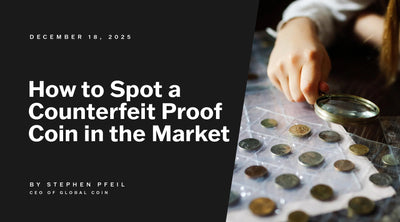
How to Spot a Counterfeit Proof Coin in the Market
How to Spot a Counterfeit Proof Coin in the Market In the world of numismatics, few things hold ...
Discover More
BREAKING NUMISMATIC NEWS: Large batch of 2025 Marine Privy Coins MELTED by U.S. Mint
BREAKING NUMISMATIC NEWS: Large batch of 2025 Marine Privy Coins MELTED by U.S. Mint A historic ...
Discover More
Tax Implications When You Sell Gold Bullion in Different States
Disclaimer: The following content is for informational purposes only and should not be construed ...
Discover More

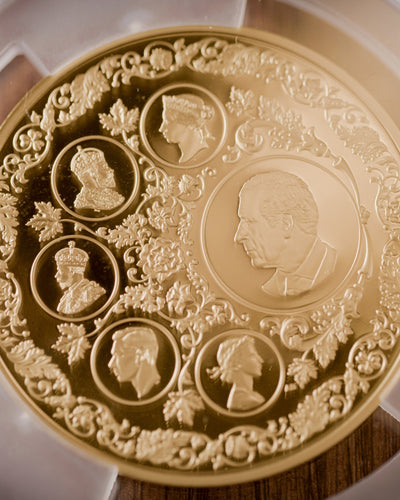
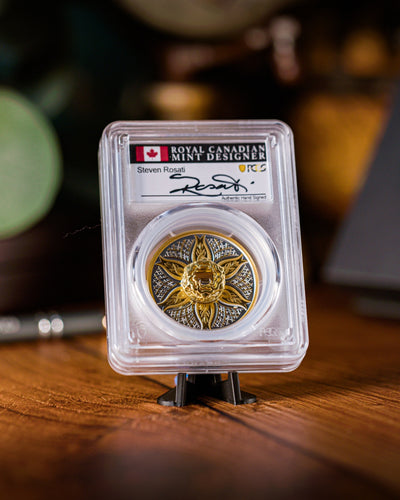
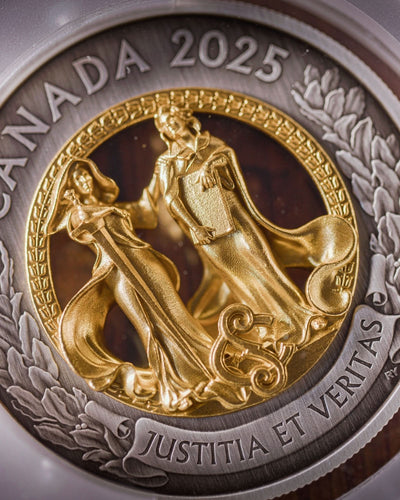
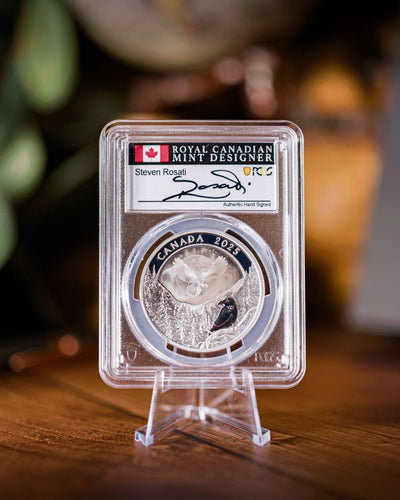


Leave a comment
This site is protected by hCaptcha and the hCaptcha Privacy Policy and Terms of Service apply.